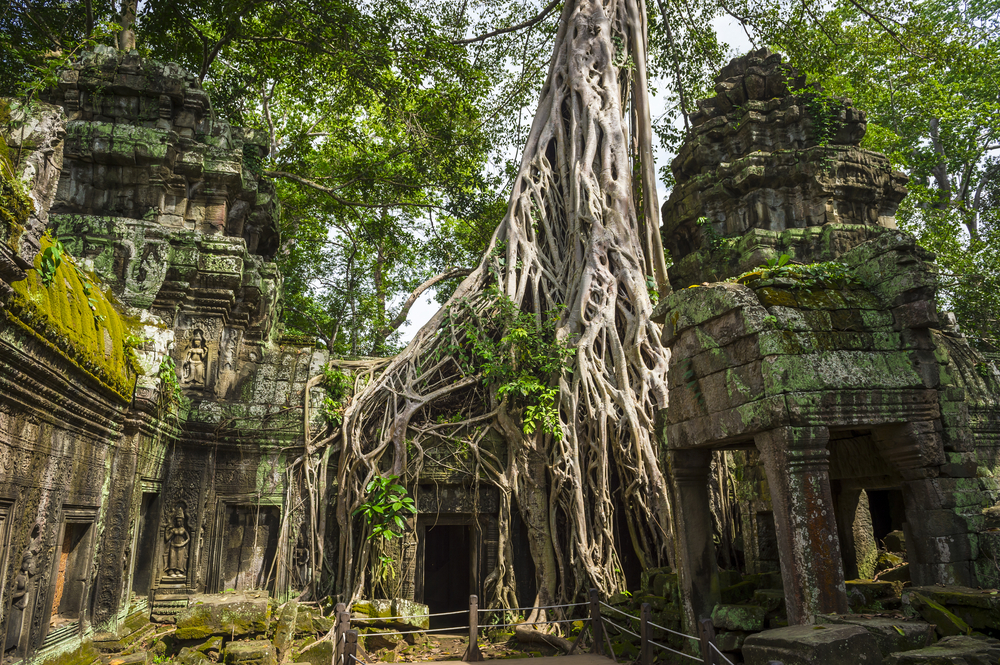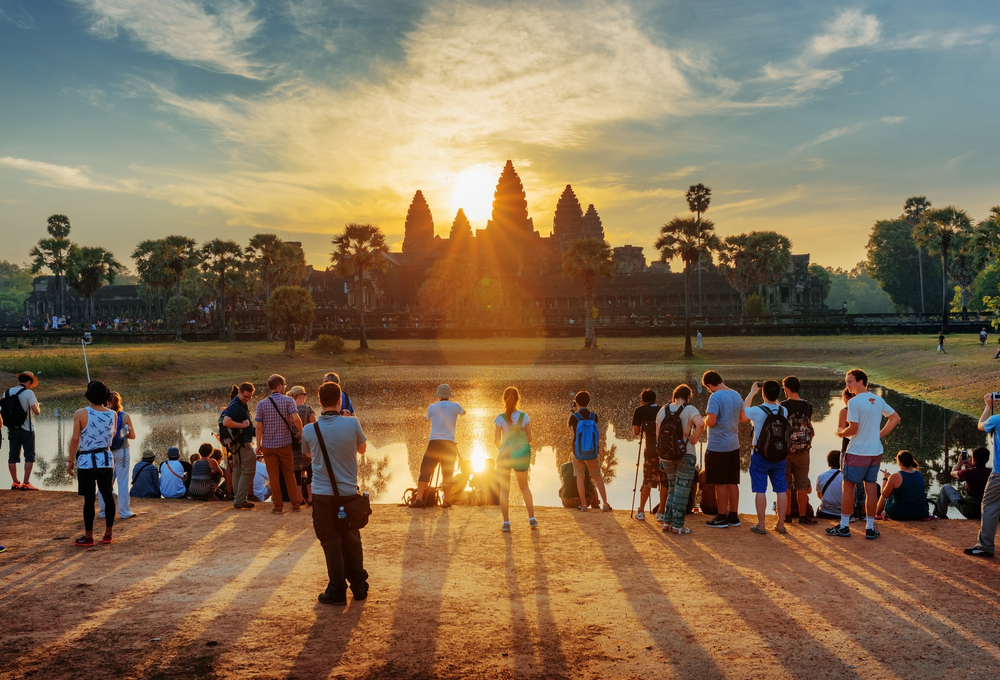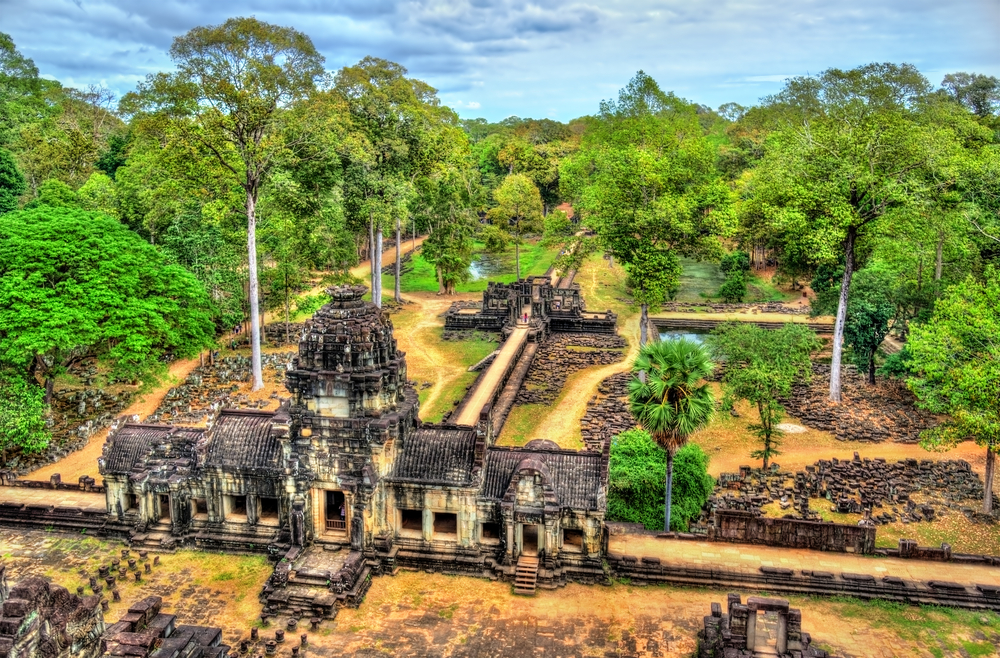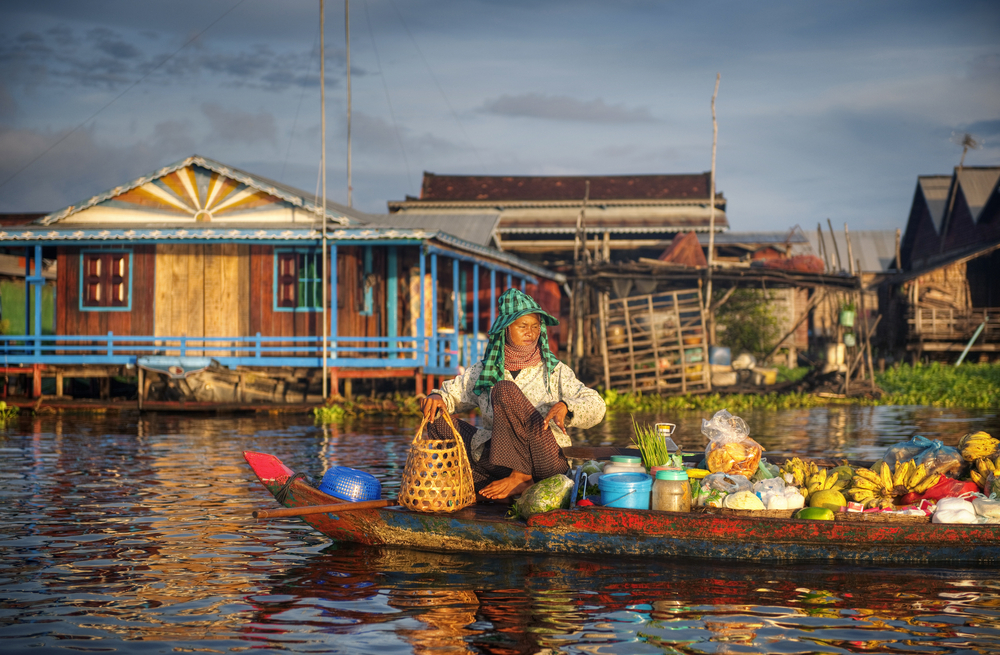Angkor Wat is both a bucket list item for ancient history buffs and a contender for one of the Seven Wonders of the World. Located in Northeastern Cambodia near the modern town of Siem Reap, Angkor Wat is just one part of one of the biggest temple sites in the world, blending a fascinating medley of Hindu and Buddhist architecture and iconography that reflects the history of ancient Khmer culture.
The Angkor Wat complex was built in the 12th century as a Hindu temple dedicated to Vishnu. Over time, as Buddhism grew in popularity amongst the Khmer people (those are the native people to Cambodia), more and more temples were built decidedly Buddhist: beautifully reflected in both architecture and art.

And then it was lost. Sometime after the 16th century, the Khmer people all but abandoned this massive temple site for reasons unknown. It wasn’t rediscovered by archeologists until the 19th century. By then, the jungle had already reclaimed it.
Now, Angkor Wat and the surrounding temples have largely been restored, and they are Cambodia’s biggest tourism draw. And for good reason. The temples here are on a massive scale. They are so beautiful that they are almost unbelievable.

Angkor Wat is only one part of this ancient superstructure, which stretches for an area of over 400 kilometers squared. It’s the biggest and most famous of the many temples and ruins in the area, but there are a whole bunch of other temples around it that you don’t want to miss. So, if you’ve only got one day to see the whole of Angkor Wat and enjoy the nearby town of Siem Reap, we’re here to help you make the most of it.
Getting started
You’ll need to arrive the night before you want to see the temples and negotiate a tour ahead of time. Most hostels will have tours you can join, or you can strike up a deal with a a local tuk tuk driver. It shouldn’t cost you more than $15 to hire a tuk tuk for the whole day. If you hire your own, you have more say over your trip, which can be really useful.
Remember that you’re visiting a bunch of holy sites, so be sure that you’re dressed modestly. You want your legs and shoulders covered in order to get into all of the different sites.
First up: Angkor Wat
Now, get to sleep early because you’re saddling up at 4am to watch the sunrise over Angkor Wat. A lot of hostels will make you a breakfast bag to go for a couple of dollars, and I recommend taking them up on that because you’ve got a big day ahead of you. Most tuk tuks will take you to the West Gate, which, incidentally, is where literally everyone else is going.
Pro tip: tell your driver to take you to the East Gate instead. When I visited, we were some of the only people who did this, so we skipped the whole line and were able to walk to the West side and snag a choice seat next to the pond where everyone waits to snap that quintessential Angkor pic. If you buy coffee from one of the ladies working there, they have mats to give until they run out. So if you skip the lines, you can have a great view and a mat to sit on. Win win!
Angkor Wat itself is awe-inspiringly beautiful, and I recommend getting a tour guide so you can fully appreciate everything you see. I didn’t, and I regretted it. You can also enter the big central tower for incredible views over the complex in the morning sunlight. A note for the ladies: they won’t let you in here if you’re wearing a skirt, so be sure to throw on some lightweight pants for your day of exploring.
A personal fave: Bayon Temple
Bayon Temple a must-see. It’s on the tour trail and it’s also one of the most famous images related to the Angkor Wat complex, famous for its 216 serene carved faces that depict either the king who created it or the bodhisattva of compassion, Avalokitesvara, depending on who you ask. It’s absolutely surreal.
This temple can be a little frustrating because of its smaller scale and large crowds; it’s best to get here early or set it as the last stop in your trip later in the day when the crowds have abated.
Next on the list: Baphuon Temple

From Bayan Temple, it’s a short monkey-filled walk to Baphuon Temple. Lots of monkeys who are both adorable and dangerous. Don’t feed them and don’t get too close, but take lots of pictures because when else will you see so many monkeys?
Once you reach the temple, you walk along an elevated walkway that probably once kept pilgrims from the irrigated lake that used to be there. After Bayan, this temple is a little less striking in its design, but the coolest feature is once you’ve climbed down the back. The temple structure was built when the area was predominantly Hindu, but later Buddhists altered the structure so that the back is in the form of a great reclining Buddha – if you squint a little.
Take a Break
It’s easy to get templed out and you’ll probably be making other stops at smaller temples along the way. Stop at one of the restaurants nearby or just relax with a coconut and a snack someplace. Trust me, you’ll feel much better going into what is easily my favorite temple in the batch.
End the day: Ta Prohm
This temple is also known as the “Tomb Raider” temple because they shot for the film here. Unlike all of the other sites which have been restored heavily, they’ve mostly left this temple as they found it; the jungle and the temple coexist in a beautiful state of decay.
There are trees growing through the brickwork, their roots forming lattices where the mortar used to be. In other places whole buildings have crumbled and been overgrown. It’s the best place for imagining what it would have been like to be one of the first people to discover these temples.
Explore Siem Reap
Once you’ve finished your tour of the temples, head back to town to explore the exciting little town of Siem Reap. I would recommend relaxing with a foot massage after climbing around the temples all day, but if I were you I’d skip the full body massage here. You can get much better body massages in neighboring countries.
After that, get some dinner and enjoy the traditional Khmer food. You can even eat crocodile! Once you’re done, there are art galleries all over the place where you can pick up brightly colored paintings and you can explore the bustling night market. Or, if partying is more your scene, head straight to Pub Street, where you can score free happy hour drinks and take in the surprisingly active nightlife.

If you can stay longer, there are lots of other places to explore, the nearby floating villages and waterfalls, or even more temples – seriously there’s a reason this is one of the largest religious sites in the world. But, if you only have one day to spend exploring Angkor Wat, make the most of it!